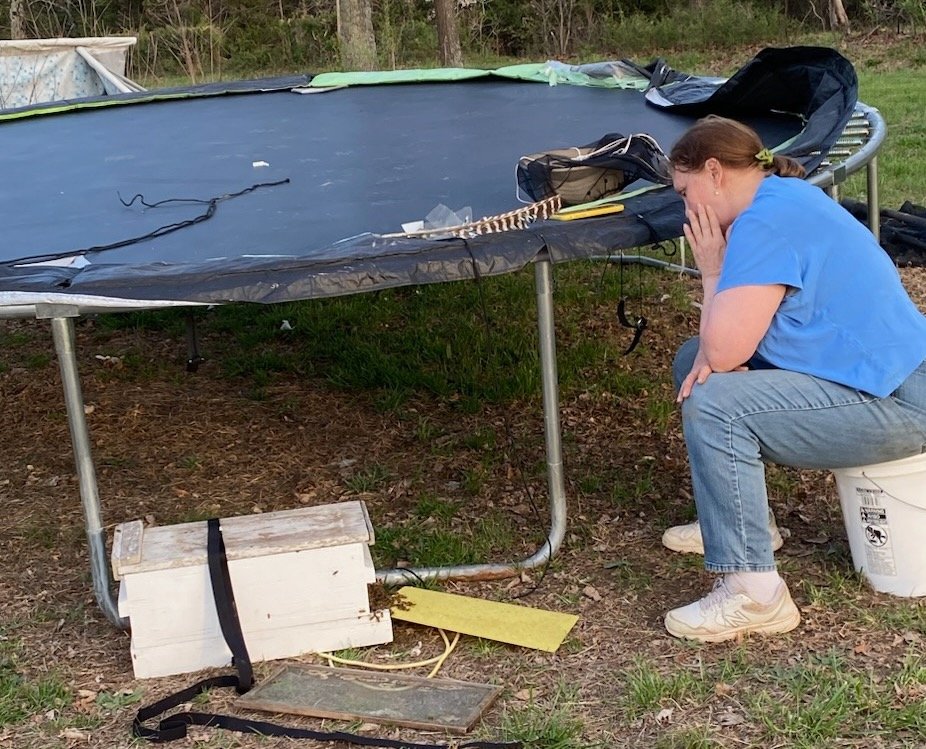Bee Hive Wind Breaks
/I'm using a piece of cardboard to give my hives a bit of a winter wind break at the entrance.
Bee Hive Wind Breaks
When I first started beekeeping 8 years ago, it was popular to talk about how to create winter wind breaks around hives. The suggestions included building a wall of straw; making a wooden wall in front of the hives lined up in a row, and a variety of concrete block and brick walls, or combinations of both. One excellent woodworker even talked about adding little awnings over his hives, which prompted me to think to myself, if I only could make half this stuff out of fabric I would be golden!
Adding items around hives is also an easy suggestion if one has hives on a flat area. Mine are on the side of a limestone hillside, I'm lucky the hives aren't slipping down the hill let alone trying to keep any semblance of a wall standing.
One year I did try the bales of straw in front of my two hives but one of the bales ended up getting knocked down the hill. The most colorful theory was that a bear pushed it over but I would bet a raccoon may have taken an inadvertent slide. Later in the year, I rested my smoker on the top of the bale and almost set it on fire.
A local hardware store gave away cut Christmas trees so I used them as hive wind breaks.
Another year I recycled Christmas trees in front of hives to give them some wind protection and a little possum family settled in. That option did work better than the straw, at least the baby possums hung on to the trees at one point. I assume that helped to keep the trees from rolling away, as well as the tenacious possums.
This year, with temperatures tanking below 0F, I felt out of practice adequately winterizing my hives, especially when the winds were hitting me earlier today and dropping the already cold temperatures even further.
As I looked out over my apiary, I decided I was ok with the extra honey super I put on them, giving each colony two honey supers. The black wrap also seemed to be doing it's job, and all lids were nicely sealed over the solid inner covers but I needed to do something to cut the wind hitting the entrance reducers: a cardboard awning of sorts.
To make sure the cardboard stays, I cut it long to fit under the black quilted wrap.
Selecting a heavy cardboard box, I cut it to the approximate width of my 8-frame hives, tucked a 2-inch border at the bottom and scooted the cardboard under the black insulated wrap I already have around the hive bodies.
Would you believe no bees came out to check what I was doing?? Well, would you in this kind of weather?
Here I am sneaking the cardboard up under the black wrap to keep it dry from snow and rain.
These aren't designed to do much more than ferry the cutting winds from directly hitting the bottom hive entrances where I fit in the smallest opening entrance reducers.
The side openings to the cardboard awnings will allow bees to leave if the weather turns warm before I can get out to remove these, and the bungee cords should hold them in place. The plastic wrap will keep the cardboard dry if it rains.
Will they work?
I feel better already!
Charlotte















